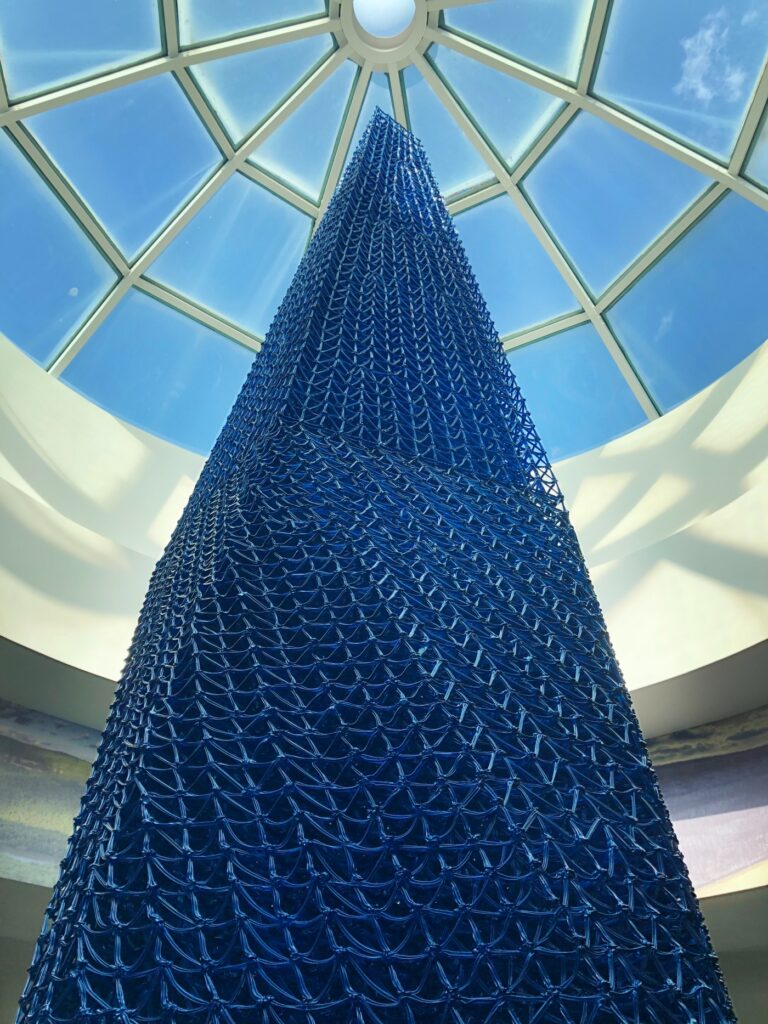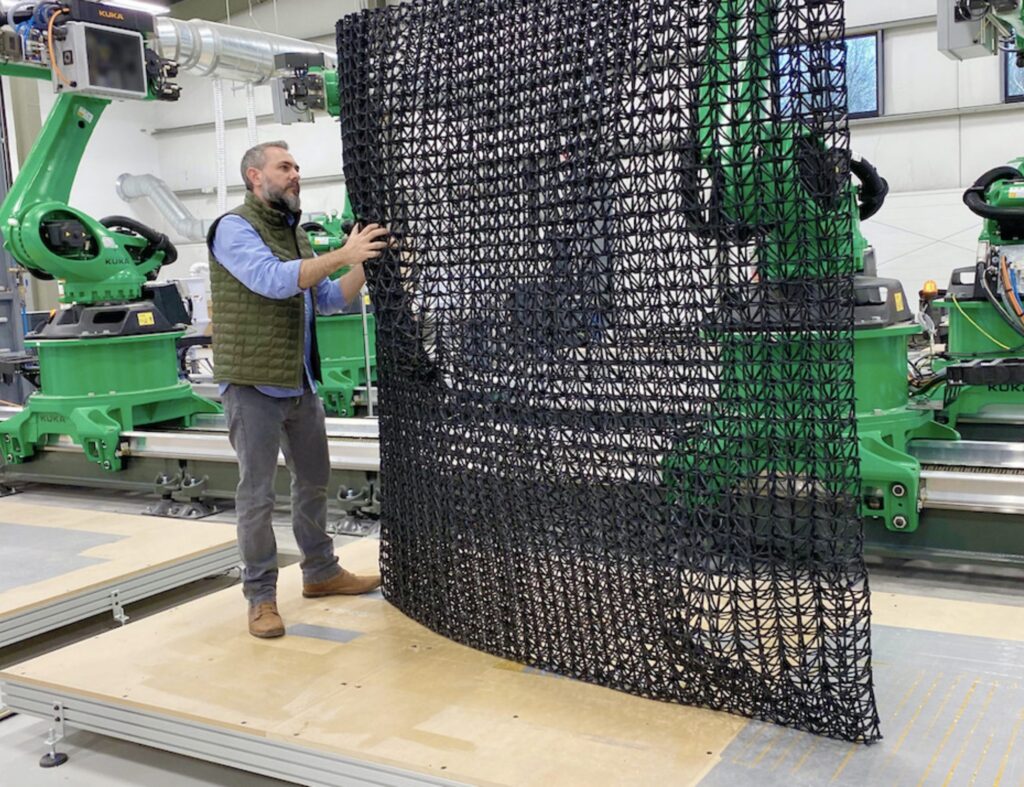Branch Technology, the Chattanooga-based additive construction (AC) firm, has been awarded a $1.13 million contract from the US Air Force for its proprietary Cellular Fabrication (C-Fab) technology. The Air Force Research Laboratory (AFRL) and AFWERX, the Department of the Air Force’s technology accelerator program, selected Branch to use C-Fab to produce a 3D printed retrofit system for exterior walls.
Uniquely, C-Fab involves printing latticework in composite materials for architectural components, which are then finished with conventional building materials — including spray insulation and concrete — to produce the complete structure. Earlier this summer, Branch began implementing a pilot program, in collaboration with the Chattanooga city government and multiple other partners, to use C-Fab to print shelters for Chattanooga’s unhoused population. Two residents of the shelters have already been moved into permanent housing, which not only reduced the unhoused population in Chattanooga but also opened up the shelters for new residents.
AFRL and AFWERX granted the funds to Branch via a joint Small Business Innovation Research (SBIR)/Small Business Technology Transfer (STTR) Direct-to-Phase II process, a system initiated by Air Force in 2018 to speed up contract execution. This is Branch’s third Phase II contract, with the objective of the latest funds being to enhance the maintenance and sustainability of Air Force installations.
 A Branch installation at the Chattanooga Airport
A Branch installation at the Chattanooga Airport
In a press release about the Air Force’s awarding of a $1.13 million contract to Branch Technology, the program development manager for Branch, David Goodloe, said, “The Air Force has been an incredible innovation partner. Their commitment to sponsoring and transitioning game-changing technologies is unparalleled in my experience working with the government. We are excited to develop a new capability that will improve the performance of the Air Force’s built environment, reduce its operational carbon footprint, and test capabilities for integrated force protection. Buildings are responsible for approximately 40% of all global carbon emissions. Retrofitting existing buildings is the only viable answer to addressing this challenge, as new construction projects are often even more expensive, carbon-costly, and wasteful. This project will enable us to develop and demonstrate a fully scalable and customizable 3D printed retrofit panel system that can be tailored to an existing building’s geometry to drastically enhance its energy efficiency. We will demonstrate this innovation on a building at Kirtland Air Force Base in Albuquerque, New Mexico in 2024 and plan to apply it to other buildings for the military and beyond.”

3D printing companies are always looking for the next “killer app”, which will likely only be a more pressing consideration as the competition heats up between all the various entities looking to reap the benefits of the 3D printing industry’s move towards scale. And, of course, the more niche that a particular market segment in the industry is, the more crucial it becomes to cultivate those killer apps. If only because of the logistical complications involved in getting the broader construction sector to adopt the underlying technology, AC companies have had a bit more of a challenge than even the rest of the 3D printing industry, when it comes to killer app development.
Retrofitting, though, could be that killer app, and Branch Technology is precisely the right company to make that case, owing to the specific advantages of C-Fab. If retrofitting via AC catches on, firms that use more typical, gantry-based platforms would benefit as well, given what Goodloe noted in the quote above about tailoring architectural pieces to an existing building’s geometry. Finally, because of its potential for achieving sustainability, it is exactly the sort of project that the government can and should be involved in helping to build up the capabilities for.
Images courtesy of Branch Technology
Subscribe to Our Email Newsletter
Stay up-to-date on all the latest news from the 3D printing industry and receive information and offers from third party vendors.
Print Services
Upload your 3D Models and get them printed quickly and efficiently.
You May Also Like
Sydney Manufacturing Hub Installs WarpSPEE3D to Speed Up Materials Research
Australian metal additive manufacturing OEM SPEE3D announced that it has installed a WarpSPEE3D system at the Sydney Manufacturing Hub (SMH) located at the University of Sydney. The WarpSPEE3D, which can...
EOS & NASA Sign Agreement to Accelerate Space 3D Printing Workforce Development
If there’s one major issue in the manufacturing sector that can be expected to persist well into the future, it’s workforce development. This is especially true in nations like the...
3DPOD 266: Composite AM and Convergent Manufacturing with Habib Dagher, University of Maine
Dr. Habib Dagher founded the University of Maine‘s Advanced Structures and Composites Center, which, with 400 researchers, is one of the leading composites research centers in the world. In 3D...
Scaling Impact Through Innovation: How 3D Printing Is Transforming Pediatric Prosthetics
Around the world, thousands of children live with limb loss and limited access to proper prosthetic care. In many low-resource settings, these children go without the mobility they deserve, constrained...





























